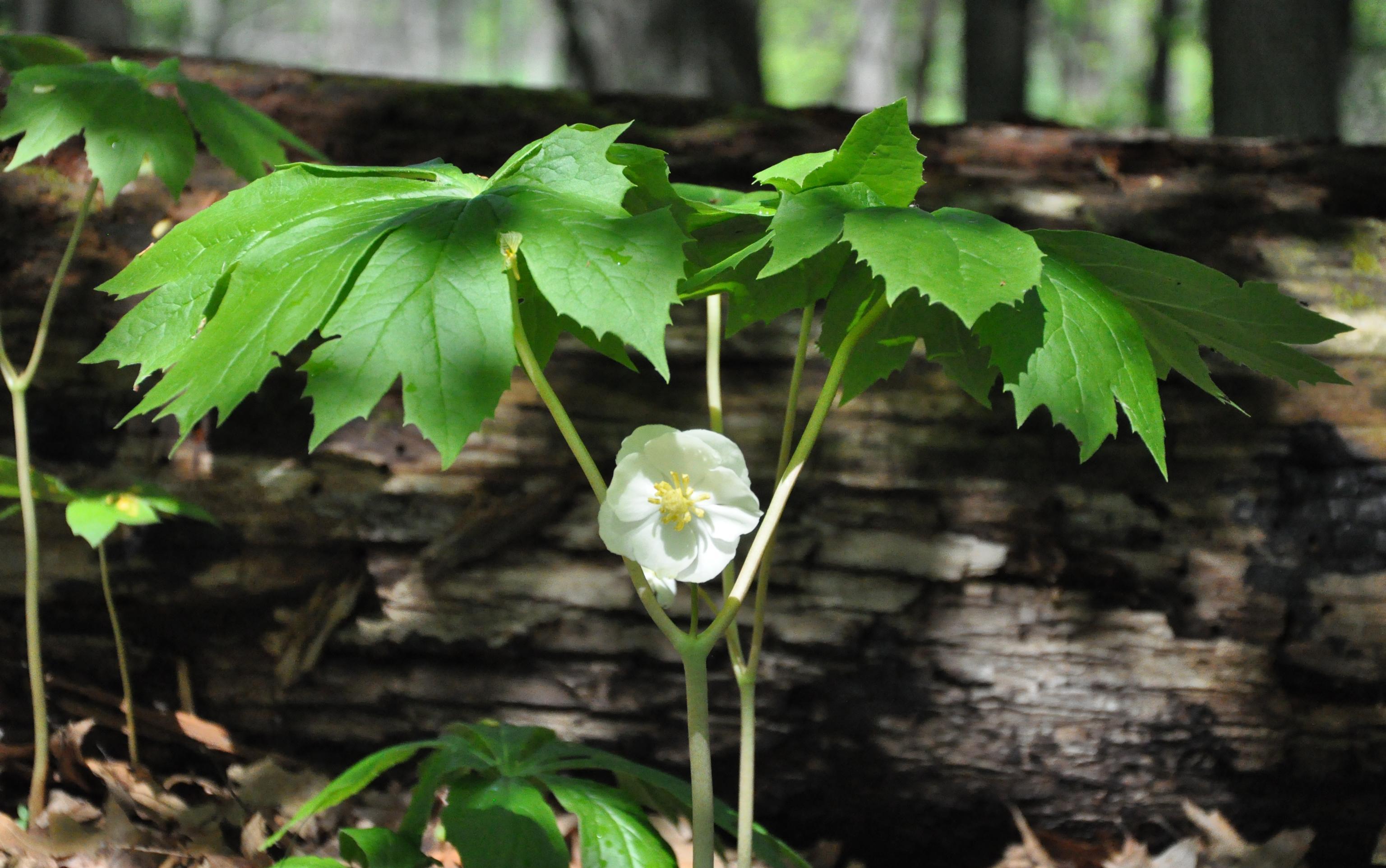Common Names:
Mayapple, Devil’s Apple, Hog-Apple, Indian Apple, American Mandrake, Raccoonberry, Wild Lemon
Parts Used:
-
Rhizome
-
Resin extracted from the rhizome
Plant Description:
Podophyllum peltatum is a perennial herbaceous plant native to North America, typically found growing in rich, moist woodland areas. It reaches a height of about 30 cm (1 foot) and flowers from May to June, with its seeds ripening between July and August.
The plant thrives in light (sandy) and medium (loamy) soils, preferring well-drained, moist, acidic to neutral soils. It can tolerate both full shade (deep woodland) and semi-shade (light woodland) environments.
Flowers:
-
Hermaphroditic (contain both male and female reproductive organs)
-
Not self-fertile
Medicinal Uses:
Podophyllum peltatum is renowned for its potent medicinal properties, traditionally valued by Native American tribes and modern herbalists alike.
Key Therapeutic Actions:
-
Liver and digestive stimulant: Strongly affects the liver and intestines, acting as a powerful hepatic and intestinal stimulant.
-
Gastrointestinal support: Used as an antibilious, cathartic, hydrogogue, and purgative remedy.
-
Cytostatic effects: The plant contains podophyllin, a compound that interferes with cell division (antimitotic). This makes it a valuable agent in cancer research and therapy, notably for ovarian cancer and small-cell carcinoma.
-
Topical applications: The resin derived from the rhizome is applied to treat warts, including uterine warts occasionally occurring in pregnancy.
-
Other medicinal constituents: The plant’s root also contains Quercetin, Kaempferol, Isorhamnetin, Gallic acid, Berberine, Alpha-peltatin, among others — many currently under study for their anticancer, anti-inflammatory, and therapeutic properties.
Edible Uses:
While most parts of the plant (especially the seeds and unripe fruit) are toxic, the fully ripe fruit is edible and has been traditionally consumed by Native Americans. It can be eaten raw, cooked, or used to make jams, jellies, marmalades, and pies. The fruit is highly aromatic, with a sweet and distinctive flavor.
Caution:
-
Unripe fruits, seeds, leaves, and roots are poisonous.
-
Medicinal use should be carefully monitored, as improper dosing can lead to severe side effects such as alopecia (hair loss) and intense gastrointestinal irritation.
Speech Disorder
A speech disorder, also known as a speech impairment...
ADHD
Attention-deficit / hyperactivity disorder (ADHD) is a...
Cerebral Palsy(CP)
Cerebral palsy (CP) is a group of neurological disorders...
Cancer
Cancer is a broad term for diseases where cells...




